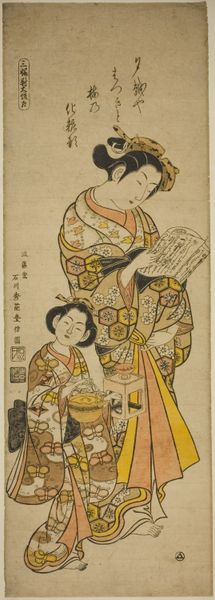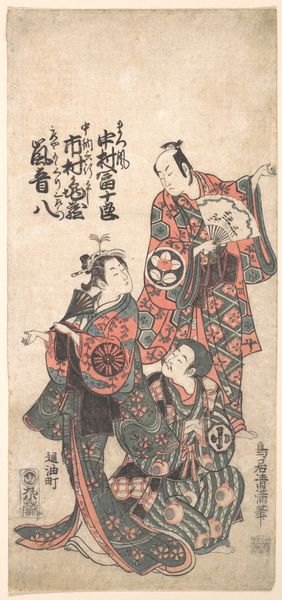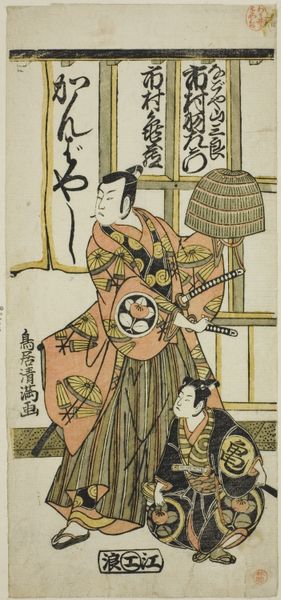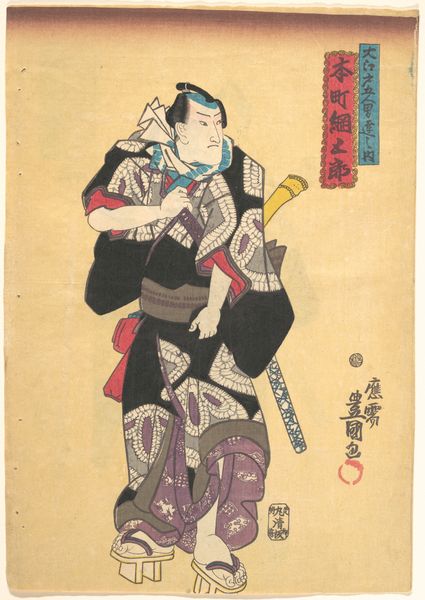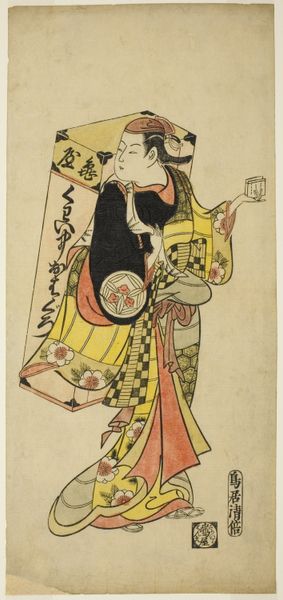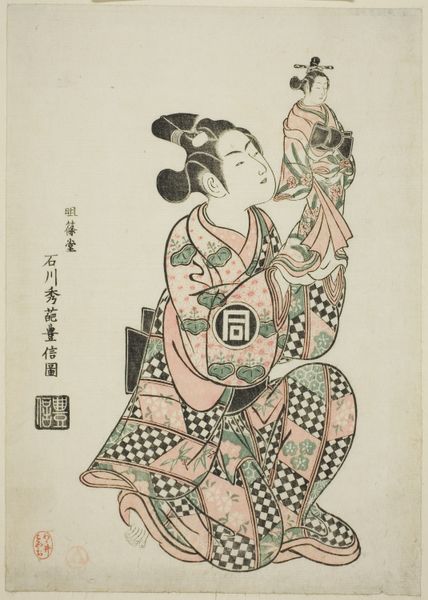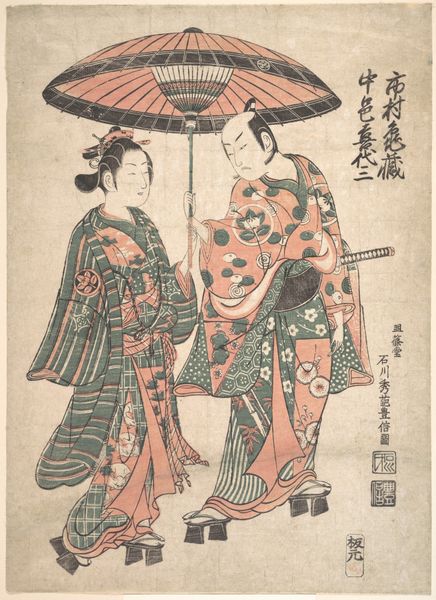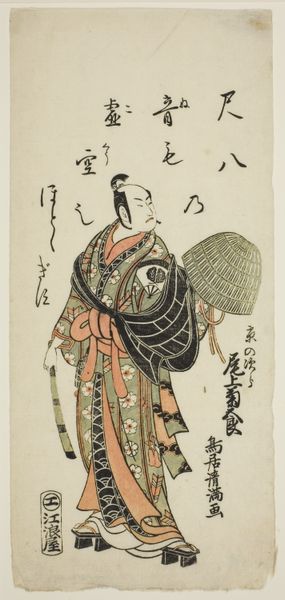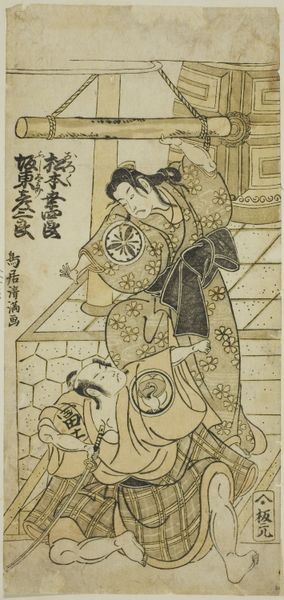
#
ink drawing
#
narrative-art
# print
#
pen sketch
#
asian-art
#
ukiyo-e
#
figuration
#
genre-painting
Dimensions: 27 7/16 × 9 3/4 in. (69.7 × 24.8 cm) (image, sheet, kakemono-e)
Copyright: Public Domain
Ishikawa Toyonobu’s “Prostitute of Osaka” is a woodblock print, likely made between 1741 and 1764, that presents us with a glimpse into the floating world of Japan’s Edo period. During this time, courtesans occupied a unique space in society. While marginalized, they were also celebrated for their beauty, wit, and artistic skills. Toyonobu, from his position as an artist, captures not only the material wealth of the courtesan, visible in the luxurious kimono, but also the social dynamics of her profession. The young attendant accompanying her signifies the hierarchical structure within the brothel system, where girls often started as servants before ascending to the role of a courtesan. This work invites us to reflect on the intersections of gender, class, and artistic expression. It asks us to consider how these women navigated their identities within a complex social framework, and prompts questions about the artist’s role in portraying them.
Comments
minneapolisinstituteofart almost 2 years ago
⋮
This print was originally one of a set of three prints. In each print, a young female attendant accompanies a sumptuously dressed woman who is meant to embody one of Japan's major cities: Osaka (shown here), Kyoto, and Edo. In the case of Osaka, the attendant carries a sake ewer and a cup on a ceremonial serving stand. Her mistress seems to be engrossed in a love letter. Each of the prints also bears a poem that associates a flower or tree with the city. In this example, the poem likens the whitened faces of prostitutes to plum blossoms in early springtime: The setting sunIn the first monthBrings made-up faces ofPlum blossoms.
Join the conversation
Join millions of artists and users on Artera today and experience the ultimate creative platform.
